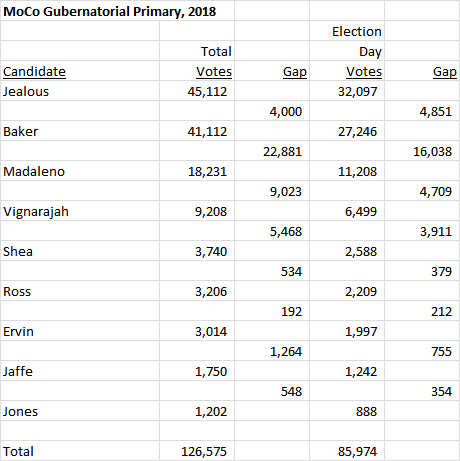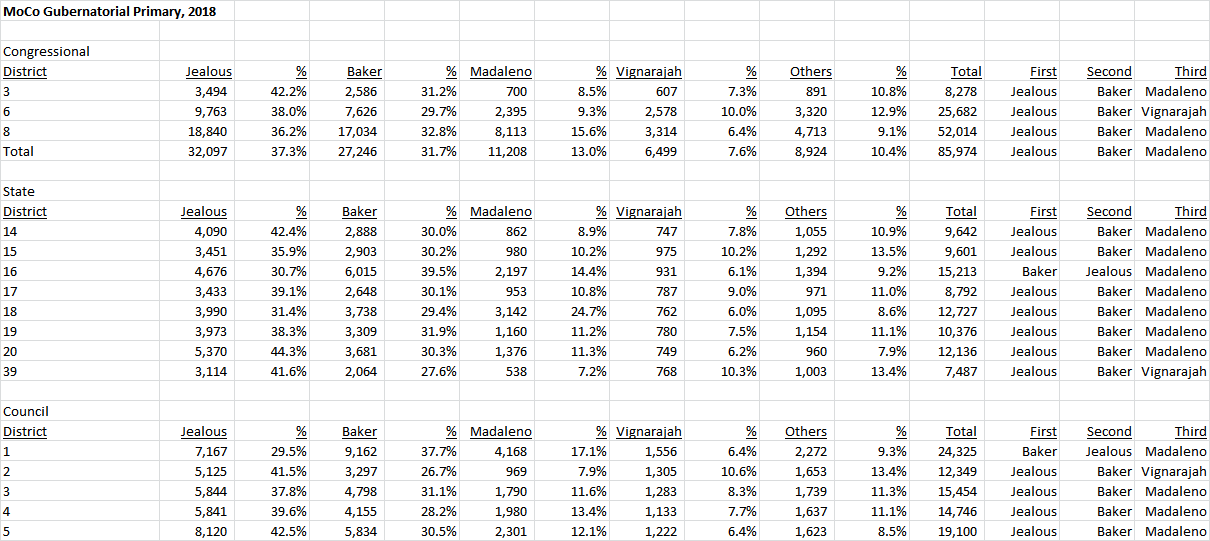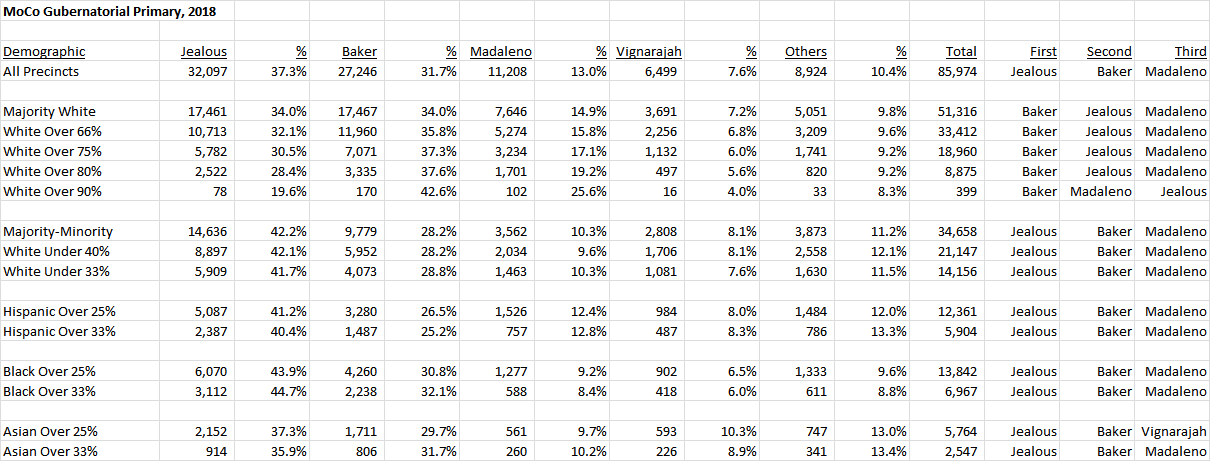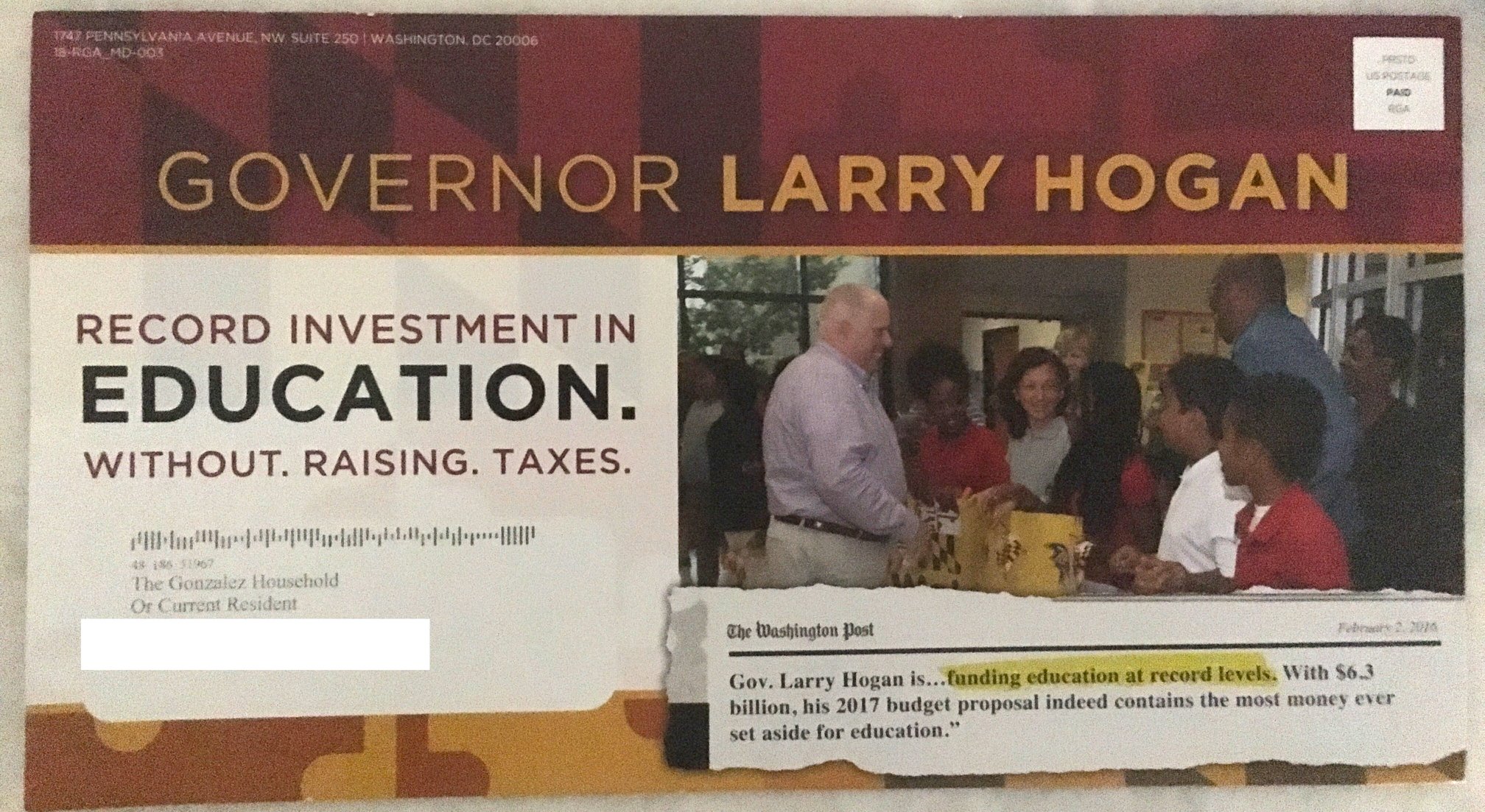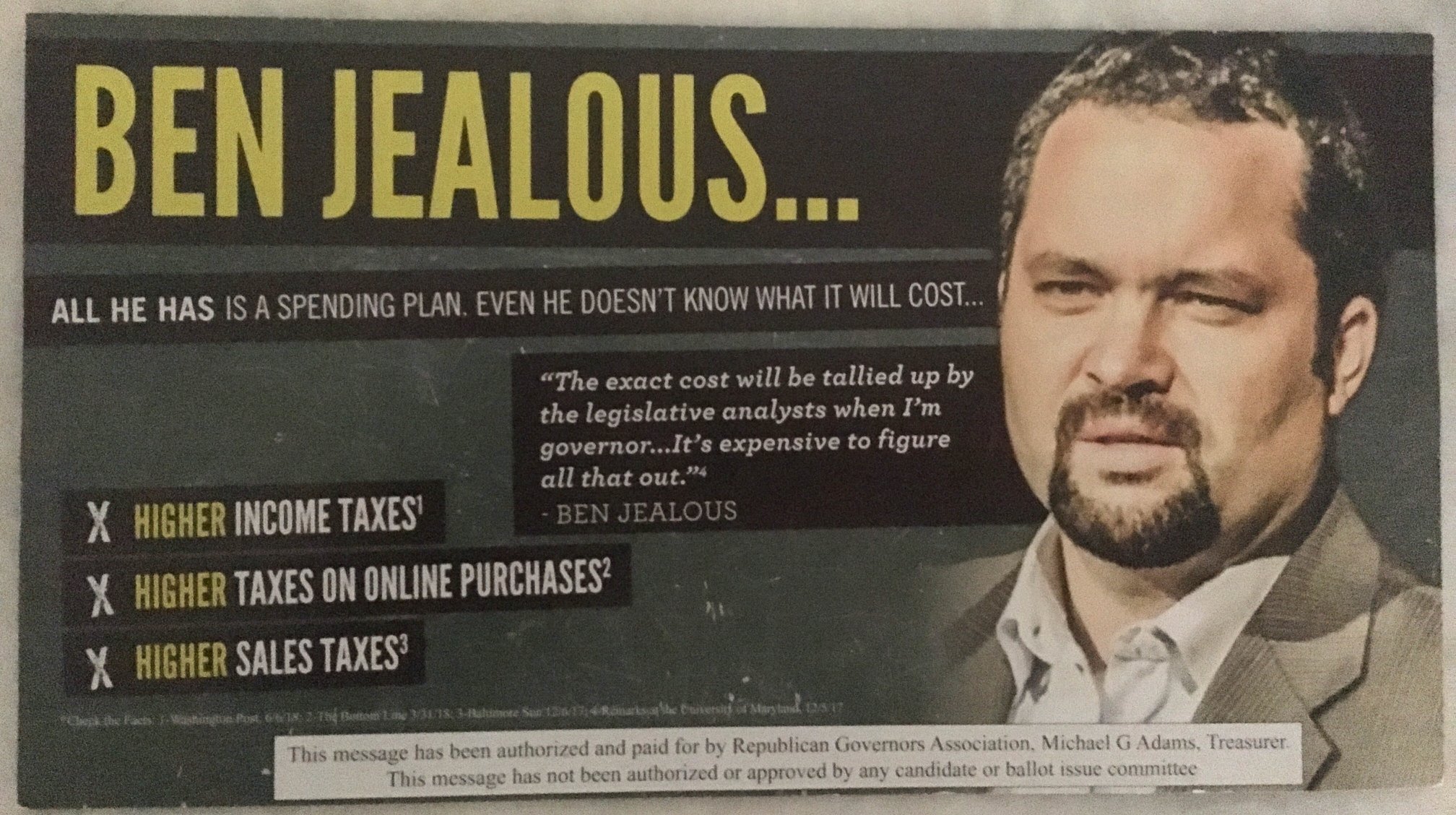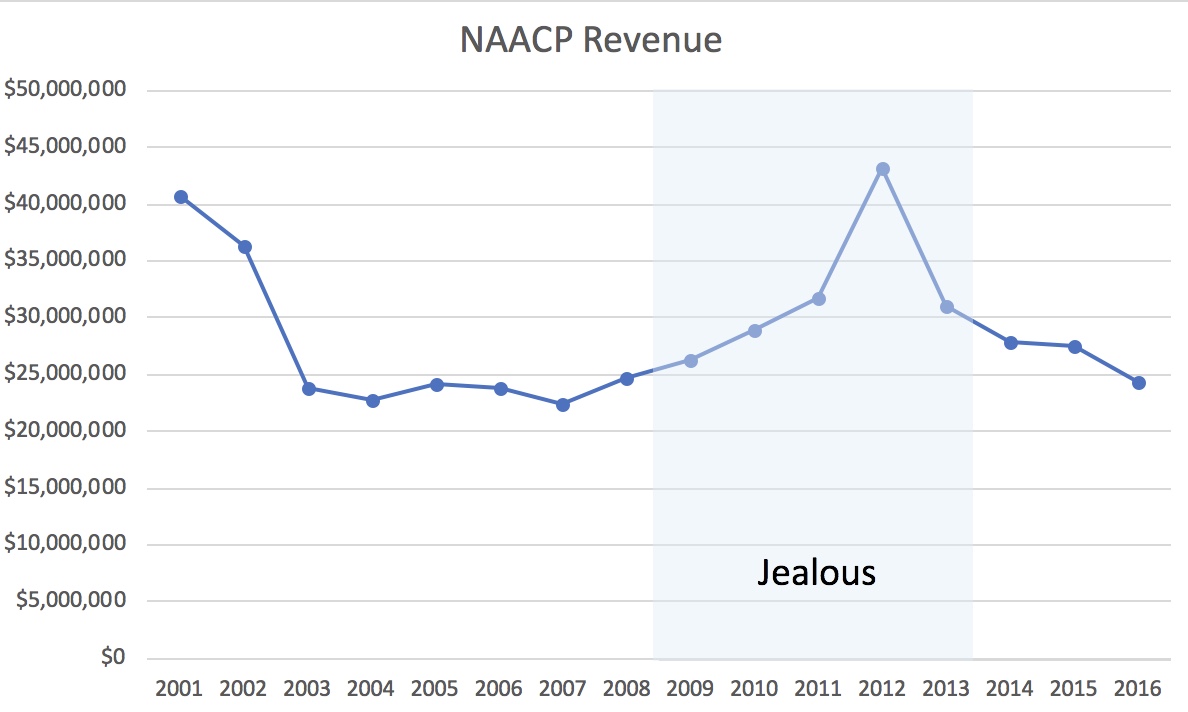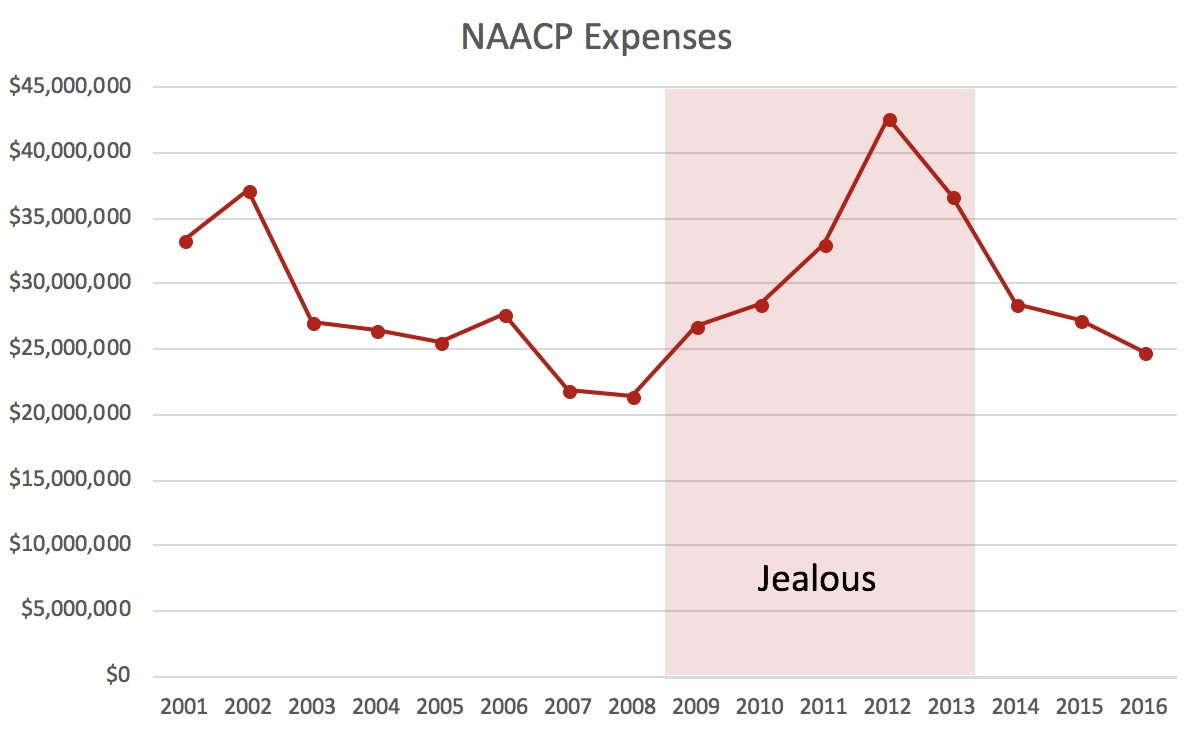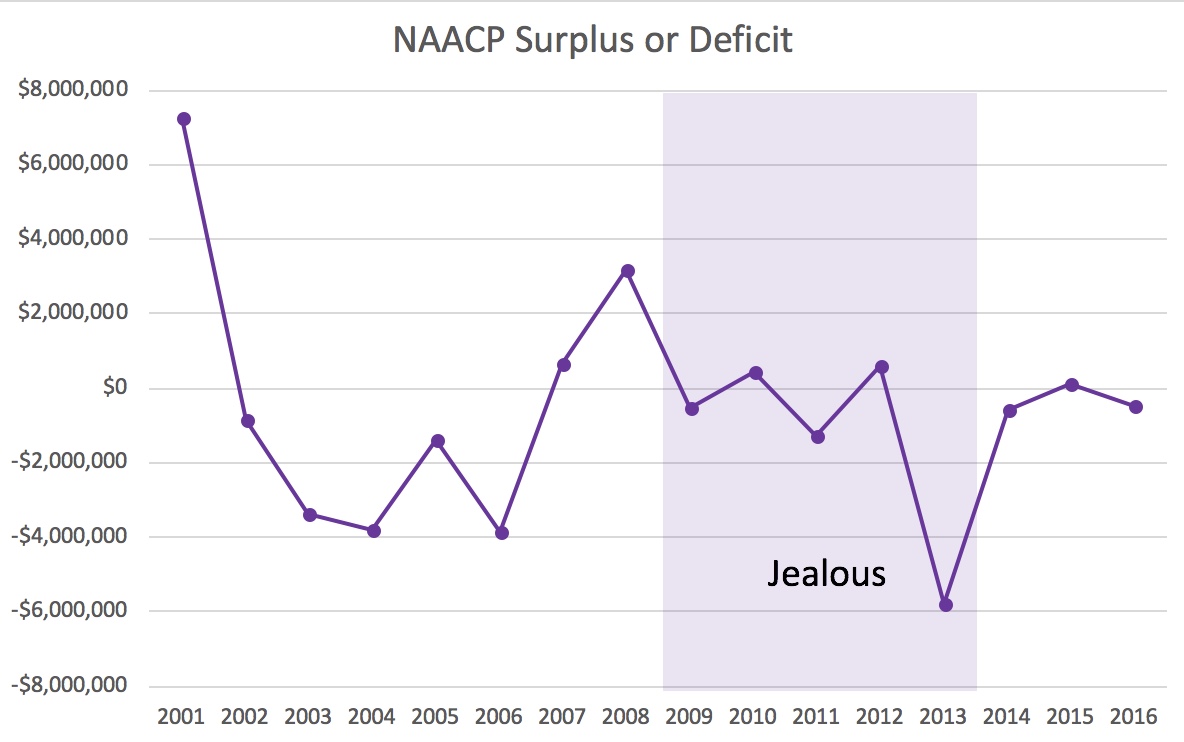By Adam Pagnucco.
Former NAACP President Ben Jealous won every county in Maryland in the Democratic primary except Prince George’s and Calvert, where Prince George’s County Executive Rushern Baker outpolled him. In MoCo, Jealous received 35.6% of the vote and Baker received 32.5%, a difference of 3.1 points. The precinct results we show below only include election day votes, which accounted for 68% of the votes cast for gubernatorial candidates in MoCo. Still, they show the patterns of voting for Jealous and Baker as well as for Senator Rich Madaleno (D-18), who finished third in the county, and former Michelle Obama aide Krish Vignarajah, who finished fourth.
Overall, MoCo saw a two-man race between Jealous and Baker. Madaleno was a distant third; he finished first in Kensington but no higher than third anywhere else, including in District 18. Vignarajah was fourth overall but finished third in Council District 2, State Legislative District 39 and several areas mostly located in Upcounty. Generally speaking, Baker did well in white, wealthy areas in the southwest while Jealous won almost everywhere else.
Jealous’s Five Best Local Areas
- Brookeville: 48% (first)
- Takoma Park and Damascus: 46% (first)
- Montgomery Village: 43% (first)
- Silver Spring East County: 43% (first)
Jealous’s Five Worst Local Areas
- Bethesda: 31% (second)
- Leisure World: 31% (second)
- Potomac: 28% (second)
- Kensington: 28% (third)
- Chevy Chase: 25% (second)
Baker’s Five Best Local Areas
- Cabin John: 41% (first)
- Bethesda: 39% (first)
- Leisure World: 39% (first)
- Potomac: 39% (first)
- Chevy Chase: 38% (first)
Baker’s Five Worst Local Areas
- Glenmont/Norbeck: 25% (second)
- Clarksburg: 24% (second)
- Poolesville: 24% (second)
- Brookeville: 24% (second)
- Damascus: 21% (second)
The racial differences in voting between Jealous and Baker can be easily seen in the demographic splits. Baker won majority white precincts and the size of his advantage grew as the white percentage rose. Jealous won “majority minority” precincts by 14 points.
One more factor to consider is the Washington Post, which endorsed Baker and attacked Jealous. In a forthcoming blog post, we will compare the performance of Council At-Large candidates endorsed by the Post to those who were endorsed by MCEA. The Post candidates’ performance was strongest compared to those supported by MCEA in Chevy Chase, Cabin John, Bethesda and Potomac – many of the same places where Baker performed best and Jealous performed worst.
We show the full splits below.
While Jealous won MoCo, he lost in the wealthy areas that tend to have disproportionate numbers of campaign contributors. That’s an important fact to note since Jealous is trailing Governor Larry Hogan badly in fundraising from MoCo. Jealous should tap into any MoCo surrogates he has, especially in Chevy Chase, Bethesda, Potomac and Kensington, to help him fortify those areas and raise money from them. If they don’t come around to the Democratic nominee, Jealous’s path to Government House will be that much harder.
Next, we will begin looking at the County Executive candidates.

